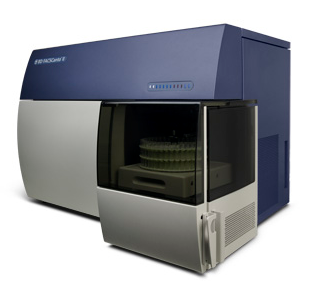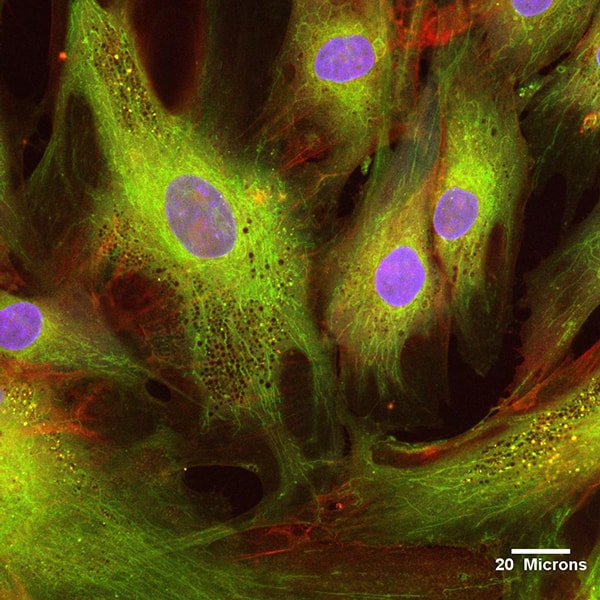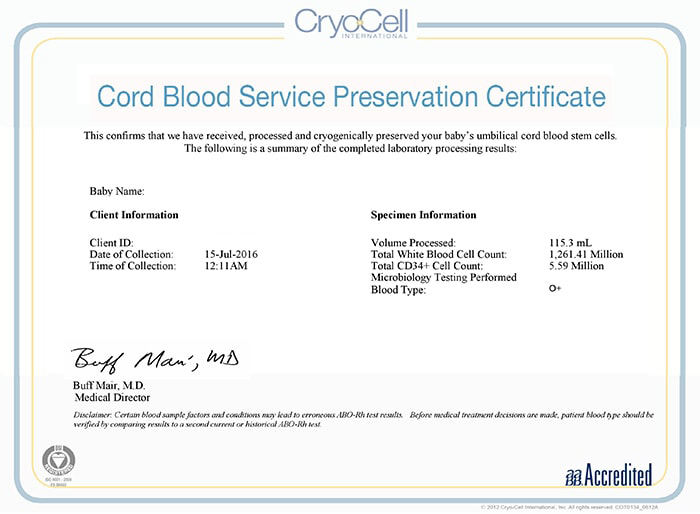The goal of cord blood banking is to capture as many stem cells as possible, but how do you know if your baby's cord blood collection is a good one?
There are currently several methods you can use to assess the potential future effectiveness of your child’s cord blood collection including the collection’s volume (in milliliters), the number of total cells (TNC count), the number of stem cells (CD34+ count), and a measurement of the stem cell functionality and potency (such as a colony-forming unit [CFU] count). In general, they all relate to one another. So more cord blood often equates to more cells, which often correlates to more stem cells, which often equates to better potency.
Let’s look at each and see what all these numbers really mean:
Collection Volume
The simplest way to judge the possible effectiveness of a cord blood collection is its initial overall volume. Increases in the volume of a cord blood correlate with increases in stem cells post-processing. It is, however, not a rule, so a smaller collection could yield more stem cells than a slightly larger collection. This is why it is important to more directly assess the number of stem cells in a collection to ensure its effectiveness in transplantation. At first glance, however, volume does give you some general insight.
In one study, the median collection of umbilical cord blood for private cord blood banks was found to be 60 milliliters, or 2 ounces. Public banks, which have high minimum requirements for donation, had a median collection size of 89 mL, or 3 oz.
We’ve found that our clients' collections are closer to the number often accepted for public donation and are bigger than the median often collected for private banking as noted in the study.
As a parent, you can expect your doctor to collect anywhere from 60 mL to 90 mL, or more, of cord blood.
Smaller volumes may be collected for a number of reasons including complications during delivery or if the parents decided to delay the cord clamping.
 Example of the flow cytometer machine used to count stem cells in a cord blood sample
Example of the flow cytometer machine used to count stem cells in a cord blood sampleTotal Nucleated Cell Count
The total nucleated cell (TNC) count is the most widely used and re-producible method for determining the relative potency of a cord blood collection. It is also an automated process that makes it easy for busy labs to proctor.
Nucleated cells include stem cells but also other immune system cells, and as such, stem cells can account for around 1% of the total nucleated cells. The TNC count, therefore, gives us the total number of many cell types but not the number of stem cells exclusively.
To count the number of total nucleated cells, a sample of the cord blood is run through a hematology analyzer, which produces a complete blood count (CBC) just as your physician does for your yearly check-up. The number of TNCs and red blood cells (RBCs) are among the cell types counted by the machine.
Parent’s Guide to Cord Blood (PGCB) says the median number of total nucleated cells in a 60 mL cord blood collection is 47.0 x 107, or 470 million cells. The minimum accepted public donation is often closer to one billion cells. We’ve found the median number of total nucleated cells in our clients’ collections, again, leaned toward the minimums required by public cord blood banks and were higher than those reported from private banks.
 Stem cells that have been stained purple
Stem cells that have been stained purpleCD34+ Cell Count
To better determine the number of hematopoietic stem cells in a cord blood collection, scientists can also look for a specific protein on the surface of the cell. This marker protein allows us to count stem cells more directly, but the marker is not exclusive to stem cells, so some other cell types will also be counted.
To count the number of cells that are positive for the CD34 protein (CD34+), a sample of the cord blood is mixed with a fluorescent dye that adheres to the CD34 antigen. A flow cytometer uses a laser to pick up on the dye and count the number of CD34-positive cells. (It can also determine viability as we will see later.)
PGCB says the median private cord blood collection of 60 mL equates to 1.8 million cells with the CD34 antigen.
Colony-Forming Unit Assay
While the number of stems cells in any cord blood collection is important, the ability for those stem cells to function and multiply after infusion is even more important. One study found that the number of colony-forming units (CFUs) was found to be a stronger independent predictor of engraftment and a potential better option in assessing the potency of a cord blood unit for transplantation.
Measuring the number of colony-forming units is direct. A sample of the cells is placed on growth media and into an incubator. During this time, the cells will begin to form colonies. After around two weeks, the number of colonies is counted. The colonies can also be broken down to more closely determine the number of stem cells that colonized.
The time and possible investment in machinery and certifications to perform a CFU assay is a drawback that doesn’t make it feasible for some cord blood labs.
Viability Testing
Another method to determine the effectiveness of a cord blood unit is by running viability tests.
The viability tests measure whether a cell is a dead or alive by its uptake of a trypan purple dye. (The dye is often mistakenly referred to as blue). Cells that are alive have intact membranes that will not let the dye in. Dead cells have porous membranes that let the dye in.
7-AAD is a test run on the flow cytometer that more accurately measures cord blood viability because it does not overstate cell viability like trypan. It can be performed during CD34+ enumeration.
In any viability test, anything more than 90% is good. As noted in our blog on cord blood banking for twins, we found that our median total post viability and CD34+ viability were a superlative 94 percent and 99 percent, respectively.
 All Cryo-Cell parents receive a cord blood certificate like this
All Cryo-Cell parents receive a cord blood certificate like thisCryo-Cell’s Post-Processing Tests
At Cryo-Cell International, every parent with stored cord blood receives a certificate giving them the specific volume of the cord blood collection, the total number of total nucleated cells captured, and the CD34+ cell count. At the time of the CD34+ cell enumeration, we also perform an overall viability test using the more accurate 7-AAD method. Prior to transplantation, we also perform a CFU assay to ensure functionality.